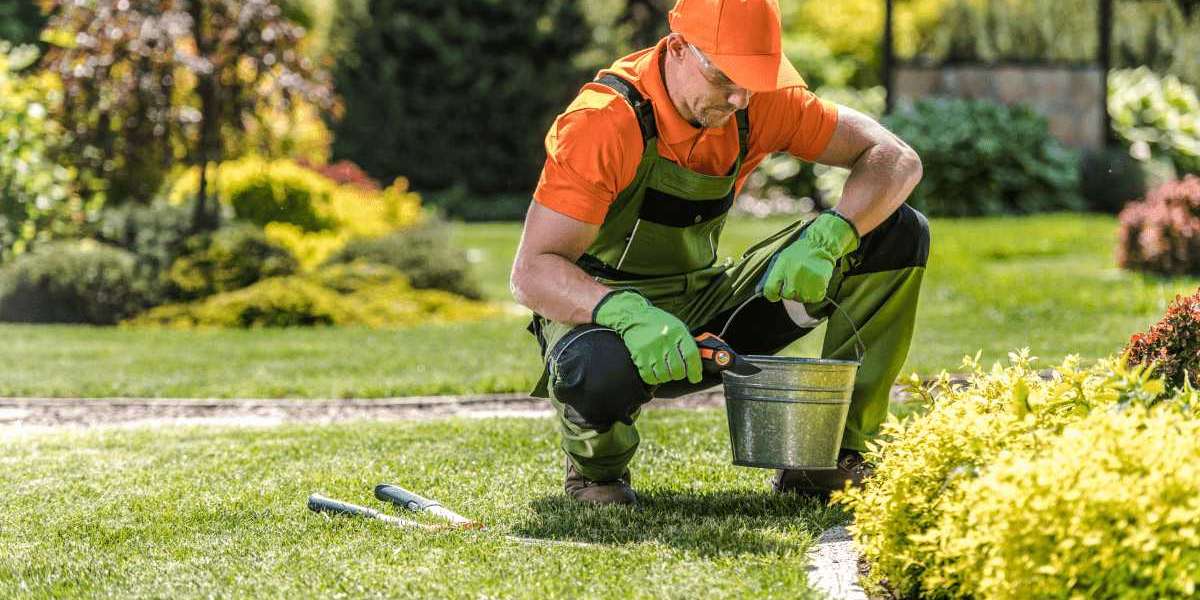Maintaining a beautiful, healthy garden requires time, effort, and a solid understanding of key gardening practices. Whether you are tending to a small backyard garden, an elaborate landscape, or a community green space, proper Garden Maintenance is essential for the overall health of your plants and the aesthetic appeal of your outdoor environment.
- Watering: The Lifeblood of Your Garden
Watering is one of the most fundamental aspects of garden maintenance, but it’s important to get the balance right. Overwatering can lead to root rot, fungal diseases, and weakened plants, while underwatering can cause plants to wilt, stop growing, or die.
- Tips for Proper Watering:
- Water plants early in the morning or late in the afternoon to minimize evaporation.
- Water deeply but less frequently to encourage deeper root growth.
- Use drip irrigation or soaker hoses to target water directly at the plant roots and conserve water.
- Check soil moisture by inserting your finger into the soil; if it's dry an inch below the surface, it’s time to water.
- Weeding: Keeping the Garden Tidy
Weeds compete with your plants for nutrients, water, and sunlight. Regular weeding is crucial to prevent them from overtaking your garden and suffocating your plants.
- Tips for Effective Weeding:
- Weed after rainfall or watering, when the soil is moist and weeds are easier to pull out.
- Remove weeds before they flower and seed to prevent them from spreading.
- Use mulch to suppress weed growth by blocking sunlight and retaining soil moisture.
- Hand-pull weeds around delicate plants or use garden tools like a hoe for larger areas.
- Pruning and Trimming: Shaping and Health
Pruning is essential for controlling plant growth, removing dead or diseased branches, and encouraging the production of flowers or fruits.
- Tips for Pruning:
- Use sharp, clean pruning shears to make precise cuts and avoid damaging plants.
- Prune trees and shrubs during their dormant season to avoid stressing the plant.
- Cut back dead or damaged branches to promote healthier growth.
- For flowering plants, deadhead spent blooms to encourage continuous flowering.
- Fertilizing: Nourishing Your Garden
Plants need nutrients to grow, and while soil provides some of these, fertilizers can supplement the deficiencies. The right type and amount of fertilizer can significantly improve plant health, growth, and yields.
- Types of Fertilizers:
- Organic Fertilizers: Compost, manure, and bone meal release nutrients slowly, improving soil structure and fertility over time.
- Inorganic Fertilizers: Fast-acting chemical fertilizers provide immediate nutrient boosts but should be used carefully to avoid over-fertilizing and damaging plants.
- Tips for Fertilizing:
- Apply fertilizers during the growing season, but follow package instructions to avoid over-fertilizing.
- Water the soil before and after fertilizing to help nutrients penetrate the roots.
- For vegetable gardens, use a balanced fertilizer or one rich in nitrogen, phosphorus, and potassium.
- Mulching: Protecting and Nourishing the Soil
Mulch is a protective covering spread over the soil to retain moisture, regulate temperature, and prevent weeds. It also improves the appearance of the garden and provides nutrients as it decomposes.
- Types of Mulch:
- Organic Mulch: Grass clippings, wood chips, straw, and compost enrich the soil as they break down.
- Inorganic Mulch: Gravel, pebbles, and landscape fabric last longer but do not improve soil fertility.
- Tips for Mulching:
- Apply a 2-3 inch layer of mulch around plants, making sure to leave space around the stems to prevent rot.
- Replenish organic mulch every season to maintain its effectiveness.
- Use mulch to protect plant roots during extreme temperatures, both hot and cold.
- Pest Control: Safeguarding Your Plants
Pests can cause extensive damage to a garden, from eating leaves and flowers to spreading diseases. Effective pest control strategies help keep your plants healthy and thriving.
- Tips for Pest Management:
- Inspect plants regularly for signs of pests like chewed leaves, webs, or discolored spots.
- Encourage beneficial insects like ladybugs and bees that prey on harmful pests.
- Use natural pest repellents like neem oil or insecticidal soap for mild infestations.
- For severe infestations, consider organic or chemical pesticides, but use them sparingly to avoid harming beneficial insects.
- Seasonal Maintenance: Adapting to the Time of Year
Each season brings unique challenges and opportunities for garden maintenance. Adjusting your care routine based on the season ensures that your plants thrive year-round.
- Spring:
- Plant new seeds and seedlings.
- Start weeding early.
- Prune and deadhead plants to encourage new growth.
- Fertilize the soil to support growing plants.
- Summer:
- Water more frequently, especially during heat waves.
- Mulch to conserve moisture.
- Watch for pests and diseases as warm weather can increase their activity.
- Autumn:
- Harvest vegetables and fruits.
- Rake fallen leaves and use them as compost or mulch.
- Plant bulbs for spring flowering.
- Prune back perennials and trees in preparation for winter.
- Winter:
- Protect delicate plants from frost with covers or cloches.
- Prune dormant trees and shrubs.
- Clean and sharpen garden tools in preparation for the next growing season.
- Tool Maintenance: Keeping Equipment in Top Shape
Your garden tools are vital for maintaining a healthy garden, and keeping them in good condition will make your work easier and more efficient.
- Tips for Tool Maintenance:
- Clean tools after every use to prevent rust and dirt build-up.
- Sharpen blades on pruners, shears, and hoes to ensure clean cuts.
- Oil metal parts to prevent rusting.
- Store tools in a dry, sheltered place to extend their lifespan.
Conclusion
Effective garden maintenance is a combination of consistent care, observation, and understanding the unique needs of your plants. By following these basic principles—watering, weeding, pruning, fertilizing, mulching, pest control, and seasonal adjustments—you can cultivate a thriving garden that provides beauty, relaxation, and even food for years to come. Whether you're a novice gardener or an experienced horticulturist, maintaining a garden offers a sense of fulfillment and connection to nature.








